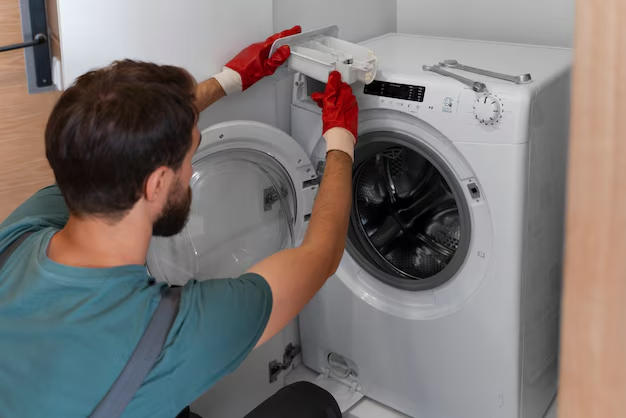Effortlessly Connect Your Refrigerator to a Water Supply: A Step-by-Step Guide
Does the thought of connecting your refrigerator to a water supply feel like a daunting task? You’re not alone. Many homeowners find themselves puzzled about how to enable their refrigerator’s ice-maker and water dispenser. Yet, this seemingly intricate task can be straightforward with the right information. Whether you're setting up a new appliance or enhancing your kitchen's functionality, knowing how to connect water to your refrigerator ensures a seamless experience every time you need fresh water or ice. In this comprehensive guide, we will unravel the steps involved, highlight important considerations, and offer useful tips to ensure a smooth installation.
Understanding the Basics Before You Begin
Why Connect Your Refrigerator to Water?
Connecting your refrigerator to a water supply enables convenient access to chilled water and ice without the hassle of manual refills. This feature is especially handy for those who entertain often or have a bustling household relying on a regular supply of ice and water.
Key Components Required
Before diving into the installation, it's crucial to gather all necessary tools and materials. Here's a basic checklist of what you'll need:
- Water Supply Tube: Typically made of copper or plastic, this tube connects your refrigerator to the water supply.
- Shut-off Valve (Saddle Valve): This valve controls the flow of water to the refrigerator.
- Compression Nuts and Rings: Used to secure connections and prevent leaks.
- Wrench: For tightening connections.
- Bucket or Towel: Handy for catching any spills during the process.
Plumbing Considerations
While the task can often be handled as a DIY project, it's essential to have a basic understanding of your home's plumbing, specifically where your main water line is and if there’s an available line near your refrigerator location.
Step-by-Step Process to Connect Your Refrigerator
Connecting your refrigerator involves some simple steps that require attention to detail to avoid leaks and ensure the proper functioning of your appliance.
🛠️ Step 1: Position Your Refrigerator
Position your refrigerator close to its permanent location but leave enough space to work behind it. This arrangement provides easy access to the back panel, where the water connection is typically located.
🛠️ Step 2: Turn Off the Main Water Supply
For safety and to prevent water damage, locate the main water supply for your home and shut it off. This ensures that any work done on water lines won't lead to unwanted spills or leaks.
🛠️ Step 3: Attach the Water Supply Tube to the Refrigerator
- Locate the Inlet Valve: At the back of your refrigerator, you’ll typically see an inlet valve where the waterline connects.
- Attach the Supply Tube: Connect one end of the water supply tube to the inlet valve. Use a compression nut and ring to secure the connection and minimize leaks.
- Tighten the Connection: Use a wrench to gently tighten, ensuring it’s snug but not over-tightened to prevent damaging the tubing or valve.
🛠️ Step 4: Install the Shut-off Valve
- Select the Water Line: Identify the cold water line nearest to your refrigerator for the valve connection.
- Attach the Saddle Valve: Clamp the valve onto the water line, following the instructions it came with. Ensure it's tightly secured and not obstructing any other utilities.
- Connect Supply Tube to Valve: The other end of the water supply tube is connected to the installed shut-off valve. Again, use compression nuts and ensure everything is tightly secured.
🛠️ Step 5: Check for Leaks
Before turning the water supply back on, double-check all connections for any obvious signs of loosening. Here’s a quick checklist to guide your examination:
- Visual Inspection: Look for gaps in the fittings.
- Feel for Moisture: Run your fingers over connections to detect damp areas.
🛠️ Step 6: Turn On the Water Supply
Carefully turn the main water supply back on, as well as the shut-off valve. Gradually increase pressure to check if any leaks appear at the joints or connections.
🛠️ Step 7: Test the Functionality
Finally, slide the refrigerator back into place and test the water dispenser and ice maker for correct operation. Listen for sounds that indicate water flow and confirm the ice maker is functioning as expected.
Common Issues and How to Troubleshoot
Leaks and Loose Connections
Leaks commonly occur from loose connections or damaged tubing. Ensure all nuts are correctly tightened and check tubing for any signs of wear or pinching.
Low Water Flow
If the water flow is inadequate, check for kinks in the tubing or partial blockage in the valve. It might be necessary to clean or realign the setup to improve flow.
Inconsistent Ice Maker Function
For issues with the ice maker, ensure it's adequately powered and that the water line isn’t frozen or clogged, impeding flow.
Summary Tips for Success 🚀
- Preparation is Key: Double-check that you have all necessary tools and supplies.
- Take Safety Precautions: Always turn off the water supply before beginning the installation.
- Tighten Connections Properly: Avoid over-tightening to prevent damage and leaks.
- Inspect Regularly: Regularly check fittings for signs of wear or leaks.
- Seek Professional Help if Needed: If problems persist or you're unsure, consulting a professional plumber can save time and prevent damage.
Embracing the convenience of a refrigerator with a direct water line is a step toward a modern and functional kitchen. This guide provides you with the confidence and knowledge to tackle this project efficiently, ensuring your fridge’s functionalities are both reliable and hassle-free. With careful attention to detail and adherence to these steps, you'll enjoy a seamless water connection that meets your household needs.
